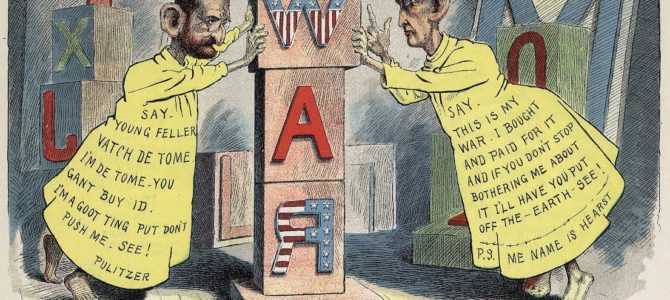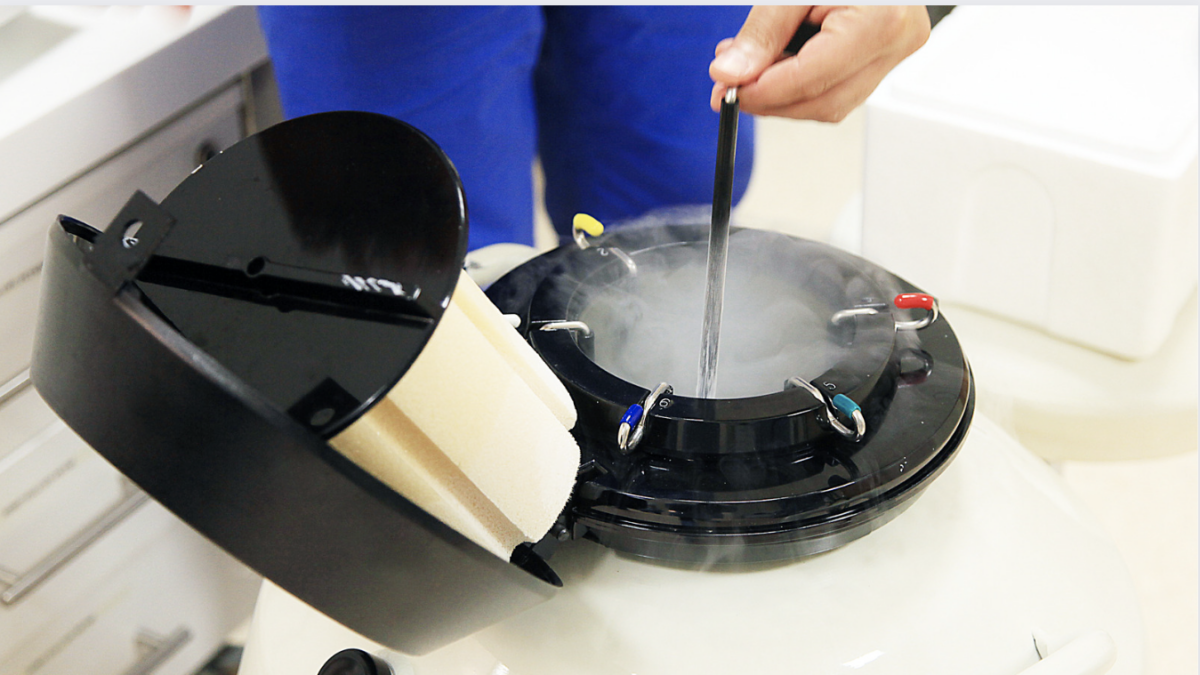
If you were under the impression that the mainstream media is unbiased and committed to reporting “just the facts,” then the media spectacle in recent days should disabuse you of that outdated notion. In fact, it should disabuse all of us of the idea that the news is objective and unbiased, and hasten the day when journalists and publishers can just be honest about their viewpoints, biases, and agendas.
A pair of articles adapted from a new book about Supreme Court Justice Brett Kavanaugh illustrates the point well. The book, written by New York Times reporters Robin Pogrebin and Kate Kelly, includes a supposedly new misconduct allegation against Kavanaugh. But the excerpt that ran in the Times last week omitted an important detail: the alleged victim never made a claim against Kavanaugh and told friends she had no memory of the incident described by Pogrebin and Kelly.
The Times was forced to make a correction when my colleague Mollie Hemingway pointed out the omission. In several subsequent media interviews, Pogrebin and Kelly blamed their editors, insisting they included the crucial detail in an earlier version of the article but it was taken out by mistake in the editing process—an excuse that strains credulity, especially since any final edits would have required the authors’ approval.
Then, it happened again. An excerpt of the book published this week in The Atlantic, “We Spent 10 Months Investigating Kavanaugh. Here’s What We Found,” also contains a major error. In a section explaining why they believe the uncorroborated accusation of Deborah Ramirez, Pogrebin and Kelly write, “The people who allegedly witnessed the event—Kavanaugh’s friends Kevin Genda, David Todd, and David White—have kept mum about it.”
As Hemingway noted, this isn’t true. In the original New Yorker story about Ramirez’s highly dubious accusation, Kavanaugh’s friends weren’t quiet about it. One male classmate denied any memory of the party in question, and others released a statement disputing Ramirez’s account: “We can say with confidence that if the incident Debbie alleges ever occurred, we would have seen or heard about it—and we did not… Editors from the New Yorker contacted some of us because we are the people who would know the truth, and we told them that we never saw or heard about this.”
Yet Pogrebin and Kelly continue to pretend they’re just reporting the facts. In a recent interview on “The View,” Pogrebin said, “What’s lost in all this discussion is that what we tried to do was kind of what we always do as reporters, which is seek the facts, and put them out there, and let people come to their own conclusions.”
NYT Reporter Robin Pogrebin complains that "people have seized on certain things" but that "it's fine to have Democratic candidates calling for impeachment" pic.twitter.com/o5BFoLedPN
— Madeline Osburn (@madelineorr) September 17, 2019
But they’re not just reporting the facts. In the epilogue of their book, they admit as much, writing that even though they found no evidence—no facts—to support the claims against Kavanaugh, they concluded that his accusers were telling the truth because their “gut” told them so and because the accusers’ stories “ring true.” This is of course precisely the conclusion they’re trying to get their readers to arrive at as well.
The Idea Of ‘Objective’ News Is Relatively Recent
Obviously, Pogrebin and Kelly have an agenda, just as their reporting was obviously guided to a large extent by their emotions, not the facts. The problem isn’t necessarily that these two journalists are biased against Kavanaugh. The problem is that they pretend they’re not biased when everyone can see that they are. The entire purpose of their book is to dredge up these horrible accusations—however flimsy, regardless of the credibility of the accusers or the denials of supposed eyewitnesses—and smear Kavanaugh.
If you want to write a book about how you think Kavanaugh was a serial sexual predator in college, and how you believe the accusations against him even though they can’t be corroborated, then fine. Write away! But don’t then go on national TV and claim that you’re just a reporter reporting the facts.
All of this gets to a larger point, which is that journalism would be better off if major media organizations and journalists simply admitted they have biases and embraced viewpoint-specific news coverage.
After all, the notion that journalism should be unbiased or “fair and balanced” is of relatively recent vintage. For much of American history, everyone knew that different newspapers and magazines had their particular biases, sometimes openly partisan ones. If you read Joseph Pulitzer’s New York World you’d get one perspective on the news, and an entirely different perspective if you read William Randolph Hearst’s New York Journal. The advent of “objective” or “fair” journalism was in some ways a marketing ploy by the successors of Pulitzer and Hearst, who hoped to distinguish their papers from “yellow journalism.”
It was good marketing, bolstered by the advent of radio in the late 1920s and television in the 1940s, which brought the New Deal’s Fairness Doctrine to bear on news broadcasting. What emerged in the middle of the last century, then, was a unique set of circumstances in which the idea of “objective” news could thrive. As Telly Davidson argued in an essay for the American Conservative last year, a lot of this rested, as much of American life did in the postwar decades, on a broad cultural consensus:
What today’s controversies illustrate is that a so-called ‘Fairness Doctrine’ and ‘objective’ newspaper reporting could only have existed in a conformist Mad Men world where societal norms of what was (and wasn’t) acceptable in the postwar Great Society operated by consensus. That is to say, an America where moderate, respectable, white male centrist Republicans like Thomas Dewey, Dwight Eisenhower, Nelson Rockefeller, and Gerald Ford ‘debated’ moderate, respectable, white male centrist Democrats like Harry Truman, Adlai Stevenson, Hubert Humphrey, and Jimmy Carter.
The Postwar Consensus Is Gone, and Never Coming Back
All of that is gone now, and has been gone for a while. The advent of the digital age has overthrown the postwar consensus of the electric age. Instead of uniting and binding us together, digital has atomized, fragmented, and enervated us. The result, in news media at least, is that everyone’s biases and prejudices are impossible to hide, making a mockery of the idea that the news is “objective” in any meaningful sense.
What we have instead is the advent of a kind of digital yellow journalism. There’s a reason President Trump’s “fake news” epithet has been appropriated by both sides of the political divide. It’s really just another way of saying “I don’t recognize your authority over the facts.”
Consider a strange article NBC News recently ran, asking readers to confess their climate “sins.” “Tell us: Where do you fall short in preventing climate change? Do you blast the A/C? Throw out half your lunch? Grill a steak every week? Share your anonymous confession with NBC News.”
This, from a network news outlet that Americans with fond memories of Tom Brokaw’s reassuring voice still think of as objective and unbiased. The article isn’t just biased in favor of the religio-environmentalist view of carbon offsets being the new indulgences, it unapologetically promotes such a view.
That journalists and editors are overwhelmingly liberal is nothing new. But the imbalance is arguably getting worse. Even financial journalists, once thought to lean conservative, are overwhelmingly liberal. Last year, a survey of financial journalists at places like The Wall Street Journal, New York Times, and Washington Post found that more than 58 percent identified as either “very liberal” or “somewhat liberal.” Less than 5 percent said they were very or somewhat conservative.
Now more than ever, media outlets should recognize that the myth of objectivity won’t lend them credibility. In fact, a failure to admit bias will eventually undermine their credibility, not least because their reporters and editors will spout off on Twitter, or email and text chains will be leaked, or their readers will notice how errors and omissions always seem to benefit liberals and hurt conservatives.
To the extent that left-leaning journalists grasp this, many only seem to grasp it lightly. A great example is Lauren Duca’s syllabus for a class called “Feminist Journalist” now being offered at New York University. (That Duca, mostly known for posting an offensive tweet upon the death of Billy Graham, is teaching a university-level journalism course is itself an indictment of the idea of unbiased journalism.)
Media coverage of our current political climate has been plagued by the mental Napalm [sic] that I call ‘both sides-ism.’ This is a kind of classic ‘he said, she said’ form of journalism where the reporter tries to give both sides of an issue, even if one side is completely bogus. You’ll also hear it referred to as ‘balance,’ although in many cases it’s ‘false equivalency,’ because attempting to appear balanced just serves to create more distortion.
The truth is not a math equation. In the midst of the ongoing American dumpster fire, there is, I believe, only one side to journalism, and it is motivated by building a truer, more equitable democracy. As this course will establish, not only does this effort allow for feminist journalists, it renders feminist journalism a moral necessity. We cannot build to social justice without adequate representation of intersectional perspectives.
To Duca’s credit, she at least recognizes that objectivity in journalism is an illusion. But she takes the wrong lesson from it. Instead of embracing a transparency about her own bias, and recognizing that all journalists and media outlets have biases, she concludes there is “only one side to journalism.” No surprise that it happens to be the side she’s on—the side of “social justice.”
But in fact there are many sides to journalism, all of them informed by biases, agendas, prejudices, and animosities. Anyone can see that. Almost everyone does. It would be great if journalists would start seeing that, too.









